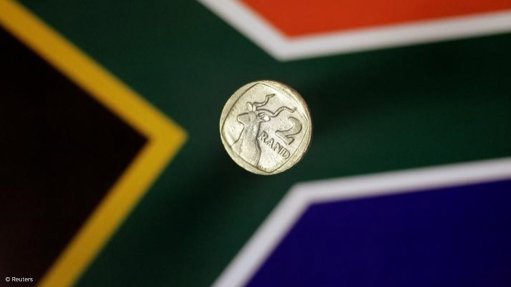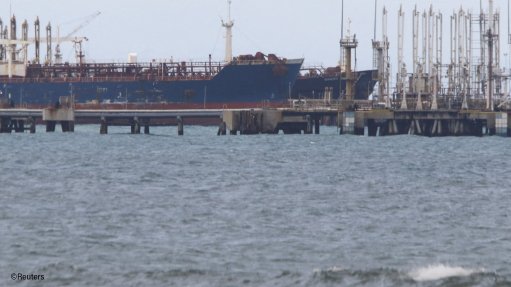On-The-Air (09/02/2018)
Every Friday morning, SAfm's AMLive's radio anchor Sakina Kamwendo speaks to Martin Creamer, publishing editor of Engineering News and Mining Weekly. Reported here is this Friday's At the Coalface transcript:
Kamwendo: China's colossal Clean Air Revolution is poised to give massive support to South Africa's struggling platinum mines.
Creamer: It is clear that China wants to fix up its problem with foul air and it is going on a big spree to do that. Now, we know that President Xi Jinping spent a lot of time cleaning up corruption. The feeling is that he's done a major job on that and he's now looking at all of the other big issues, and this is one of them. Clean up that air, because people in Beijing can't really breathe properly, trucks can't come in the day and there's all sorts of hassles.
And that is going to be very big for our platinum because the news coming through the corridors of the Mining Indaba, is that he's chosen the fuel cell. If China goes for the fuel cell, that will mean that this will be the solution throughout the world. If they do, it means that it will be platinum intensive and that is fantastic for our mines that are still struggling at the moment.
Obviously, these things don't happen immediately but you can see the writing on the wall that there is going to be a situation where the air of the world is going to be cleaned through means that might not be just that battery vehicle that we've been hearing so much about, which doesn't use the metals and minerals that we have to supply. That is particularly cobalt-intensive and also copper-intensive, but what we are looking to now is getting that hydrogen age going.
We see in Germany, steps are being taken to ensure that you've got that hydrogen infrastructure because this depends on it. If you're going to have the platinum to do the cleaning of your air, you're going to need hydrogen infrastructure.
We see it also in Japan, hydrogen infrastructure. Now that happens in China, in a big way, it's started already because they've doing it on the trucking front. This is going to mean that fuel cells will be the answer, because when China takes on these things, it takes them on in a big way and they lower the cost.
And that is what is needed, you know, lowering the cost for fuel cells. We're not just talking about cars, we're talking about trucks, we're talking about busses, we're talking about trains, we're talking about planes.
So, could you imagine how big this potentially is and how we can contribute here through our platinum resources?
Kamwendo: The world is in need of 22 big new copper mines to meet the huge upcoming global swing towards far greater energy consumption.
Creamer: The world is going to be wildy consumptive of electrical energy. That was a clear message through at the Mining Indaba. The world is going to be using the electrical energy all over the place and we see then Anglo American sitting there and being questioned during a panel. Now, Anglo American have got a mine in Chile, called Collahuasi, which is a copper mine, and it is described as either the second biggest copper mine or the third biggest copper mine in the world but it's a big one.
And it produced 500 000 t in 2016. In order to give you a mental picture of what's going to be needed by 2030 - that's not long away, about 13 years away and also 2050 for increased consumption. They said that they are going to need 22 big Collahuasis. That was the way they mentioned it; "We're going to need 22 big Collahuasis."
And when you look at the project profile at the moment, there's nothing like that on the horizon.
So, again, we swing back to Africa. What a huge change this is for Central Africa, for the Democratic Republic of the Congo (DRC), which is the prettiest girl on the copper block, and Zambia and the areas around that.
They can really be the big supplier because when you look at the cars being made in Japan now, and they were flashed onto the screen at the Mining Indaba in a big way, saw the Honda Clarity up there with a fuel cell.
Now, linked to that fuel cell is copper intensity as well. So, you can imagine how Southern and Central Africa can start benefiting. If they're looking at 22 big new Collahuasis, that is mind-boggling.
Now, what is that going to do to the price of these products? Well, everybody said that the price was going to rise. That was one thing there that you saw at this Mining Indaba, they all are looking to commodities' prices going up, which again, is good for the industry and good for us. But at the same time, we don't want the situation where it goes wild again.
So, we need some planning and we need a lot of thinking and we see that there are delays now in the DRC. There's a new mining code and a lot of the people are getting together with the ministers of the DRC, pleading with them to play fair.
They gave us a soccer analogy, and they said 'look, they've never seen in the World Cup, a game stops at half time and the rules change. This must not happen in mining because people go in with big investments and that's what their shareholders are backing them for.
And now, what's happened in the DRC is that they've changed the rules. Which is almost like tying your goalkeeper's hands behind his back, you know. So, they're saying 'please don't do that. Play fair, because your people are benefitting. We are going in there, we're not using expatriates, we are educating your people and it pays us because it takes us a payback of six months, which is nothing, and they're putting people through universities.
Also, the local communities are backing a lot of these projects and standing in the way, is a changing of the goalposts by the government and they're saying 'please don't do that".
Kamwendo: The Chamber of Mines' programme to develop new black mining companies hit a high point at this week's high-spirited Mining Indaba in Cape Town.
Creamer: I'm very pleased to report that behind the scenes, without telling us, there's been a lot of activity at the Chamber of Mines in South Africa, from their emerging miner's desk.
And they only let us know now during the Mining Indaba that they've got 25 members.
I interviewed one of the most promising members, and he is Paul Ranamana, and he listens to this radio programme quite a lot, he tells me. And there you can see him at the Mining Indaba, but he has been working like a beaver.
One of the great things there at the Mining Indaba, is that they have an investment battlefield. You've got to go out there and tell the world why they should invest in you. If you win, of course you get accolades and prizes, and I'm pleased to say that Paul Ranamana did well - he hit the semi-final spot, when there were 22 contenders fighting it out.
And, of course the Canadians ran away with it, but why? Because they've got that long tradition of the government supporting them with the flow-through scheme, we do nothing like that.
So, he did brilliantly - he's a lawyer who's gone full-time now into mining and he's wanting to start with a vanadium mine. And what the Chamber does, is that it puts them in touch with top people.
He's been put in touch with them and he's so impressed with all of the input that he's been getting through the desk, which is headed by Grant Mitchell. But even more impressive, is that a seasoned-campaigner, Richard Linnell, who's been through the mill, he's built mines and he's closed mines; he had the Bakubang Initiative that had the New Africa Mining Fund, that's his mentor!
And you can see that he's going into three things; he's going into vanadium, coal and platinum. But he will time those properly to make sure that if he does list, and he's hoping to list on some stock-exchanges, even talking about Toronto and Australia possibly, because they're suitable for these emerging mines. He could have a good momentum, the way he's planning his structure.
Kamwendo: Thanks very much. Martin Creamer is publishing editor of Engineering News and Mining Weekly.
Article Enquiry
Email Article
Save Article
Feedback
To advertise email advertising@creamermedia.co.za or click here
Comments
Press Office
Announcements
What's On
Subscribe to improve your user experience...
Option 1 (equivalent of R125 a month):
Receive a weekly copy of Creamer Media's Engineering News & Mining Weekly magazine
(print copy for those in South Africa and e-magazine for those outside of South Africa)
Receive daily email newsletters
Access to full search results
Access archive of magazine back copies
Access to Projects in Progress
Access to ONE Research Report of your choice in PDF format
Option 2 (equivalent of R375 a month):
All benefits from Option 1
PLUS
Access to Creamer Media's Research Channel Africa for ALL Research Reports, in PDF format, on various industrial and mining sectors
including Electricity; Water; Energy Transition; Hydrogen; Roads, Rail and Ports; Coal; Gold; Platinum; Battery Metals; etc.
Already a subscriber?
Forgotten your password?
Receive weekly copy of Creamer Media's Engineering News & Mining Weekly magazine (print copy for those in South Africa and e-magazine for those outside of South Africa)
➕
Recieve daily email newsletters
➕
Access to full search results
➕
Access archive of magazine back copies
➕
Access to Projects in Progress
➕
Access to ONE Research Report of your choice in PDF format
RESEARCH CHANNEL AFRICA
R4500 (equivalent of R375 a month)
SUBSCRIBEAll benefits from Option 1
➕
Access to Creamer Media's Research Channel Africa for ALL Research Reports on various industrial and mining sectors, in PDF format, including on:
Electricity
➕
Water
➕
Energy Transition
➕
Hydrogen
➕
Roads, Rail and Ports
➕
Coal
➕
Gold
➕
Platinum
➕
Battery Metals
➕
etc.
Receive all benefits from Option 1 or Option 2 delivered to numerous people at your company
➕
Multiple User names and Passwords for simultaneous log-ins
➕
Intranet integration access to all in your organisation


















